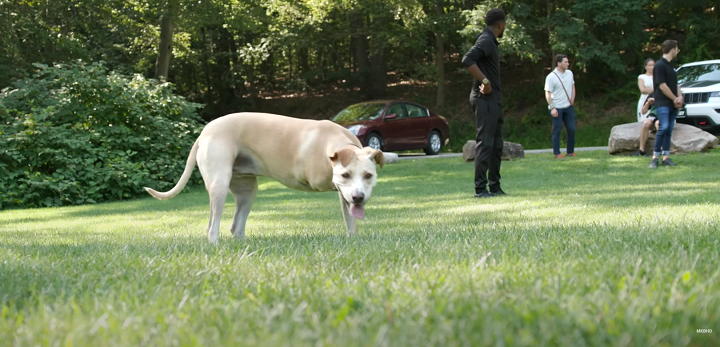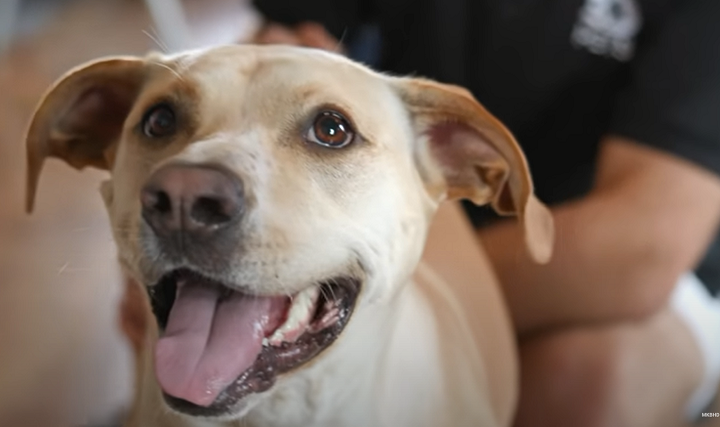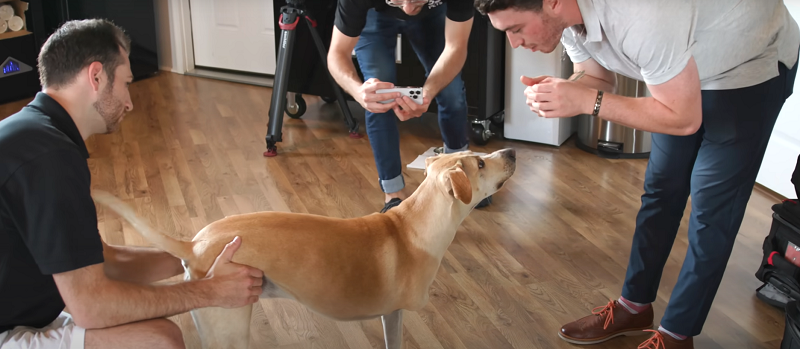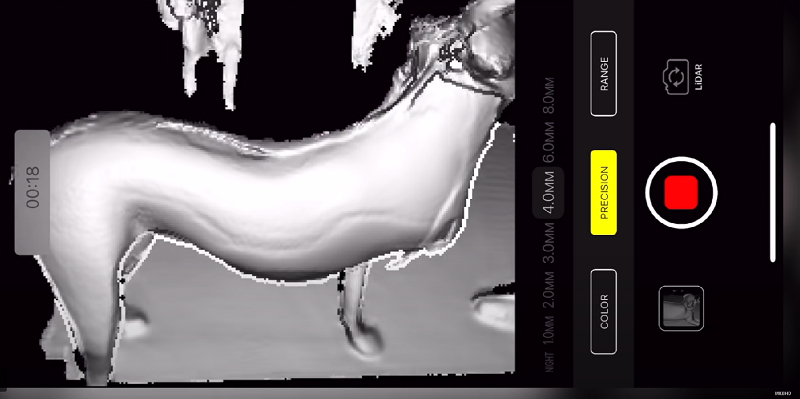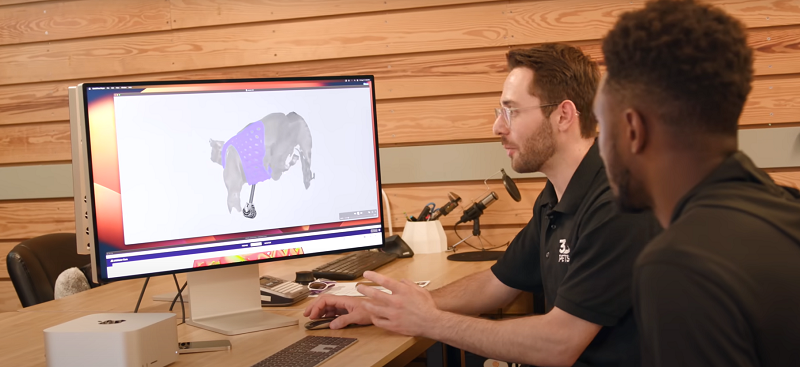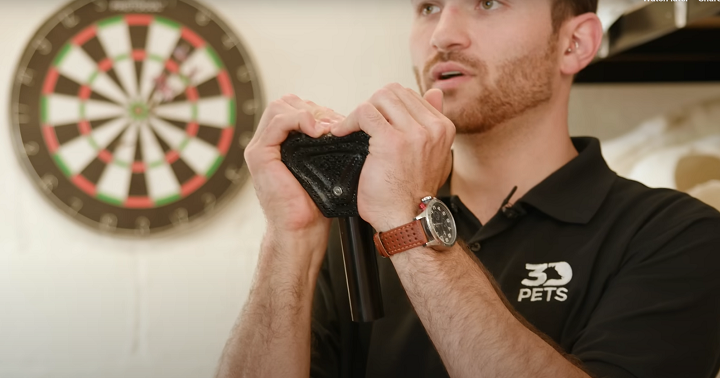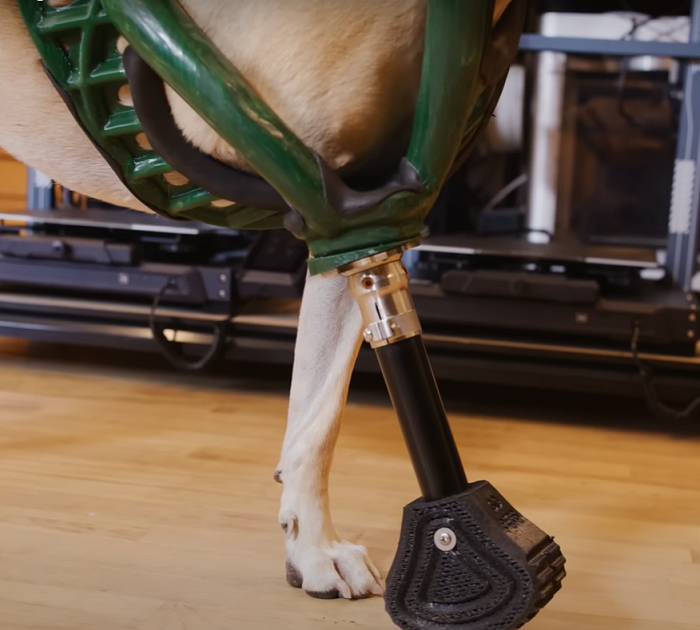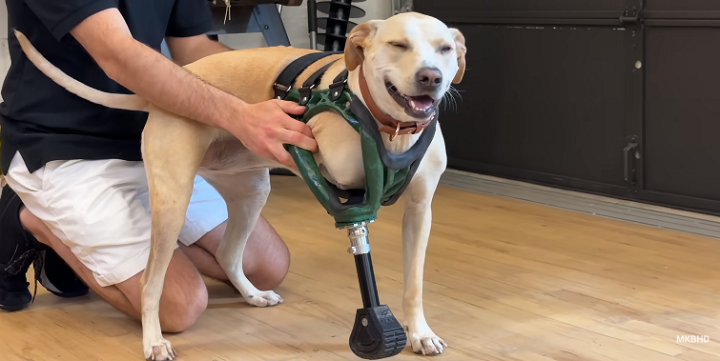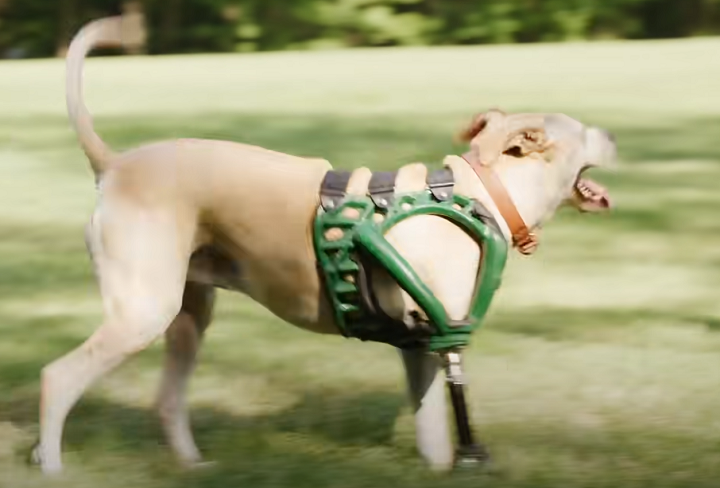Is there anything more heartwarming than a story in which 3D printing is used to help an animal? This one is even better than most, because it involves a rescue dog. Her name is Cleo, and she’s a tripod, meaning she only has three legs. She was found as a stray, and no one knows how she lost the leg, though it certainly didn’t slow her down any.
“Cleo is an awesome dog. She’s one of the nicest dogs I’ve ever met,” said tech video producer and internet personality Marques Brownlee. “She was found on Petfinder after she spent some time as a stray in Oklahoma with injuries from unknown causes. Now hanging out with Cleo and just playing with her, you’d almost forget, like you wouldn’t even know that she’s missing a leg ’cause she’s just running around, chasing stuff, playing fetch.”
But even though a missing leg didn’t bother Cleo, it could lead to future medical problems, such as joint pain and arthritis, in her other limbs, because they’re compensating for the missing one. A prosthetic leg would better support her body long-term. New Jersey-based 3D Pets offered to help Cleo in this endeavor, and invited Brownlee along to document the journey of creating and fitting her custom prosthetic leg.
“Every single animal’s situation is a little bit different. No two are exactly the same, whether it’s the reason that they lost the limb, or part of the limb, but also the size of the animal. How big are they? How far off the ground does the limb end? How much weight are they gonna be able to put on it? All these things are slightly different for every single animal, kind of like a fingerprint,” Brownlee said. “Clearly you can’t just mass produce a one-size-fits-all prosthetic. You want it to be as custom and bespoke and comfortable for every single animal as possible. So this 3D printing process allows for rapid reiteration and making a couple different versions until you get it exactly right.”
The studio uses 3D scanning and 3D printing to build custom full-limb prosthetics and mobility devices for all kinds of animals, from dogs and goats to pigs, ducks, tortoises, and even an elephant! 3D Pets has helped over 300 different animals with its advanced process, which starts with filling out a candidacy form on the website.
Once they’re approved, the first step is scanning the animal using the iPhone’s TrueDepth camera or LiDAR scanner, or even both, with help from the Heges and Comb apps. That is, if you can get them to stand still long enough to get accurate scans!
The scans are moved into the 3D Pets web portal and brought into a custom design software, which, as 3D Pets co-founder Adam Hecht explained, is “really where the magic happens.”
“We can take a design and really mold it to the 3D scan of each pet, so we can make sure everything’s fitting perfect, and we can patch things up as needed,” Hecht said. “It’s almost like 3D Photoshop in a way, we’re able to control the lattice, where the hardware mounts, where the strap is, so we can really position everything perfect to each pet.”
A different software is used to optimize the prosthesis for 3D printing by fine-tuning the details of each layers. For instance, it has to be rigid where the hardware mounts, but flexibility is required for areas around the animal’s lungs and ribcage.
Once the design is finalized, the prosthesis is fabricated on one of the studio’s many 3D printers. Because it works with a variety of animals of all different sizes, 3D Pets has many different sizes of 3D printers as well.
It took about 24 hours to print Cleo’s custom prosthesis, and then it went through some post-processing before the fitting process could begin. Alex Tholl, the other co-founder of 3D Pets, explained that the special feet on the prostheses are one of the things for which the studio is well-known.
“One of the biggest things is when the dogs are taking steps, you want that foot to be able to compress to absorb that impact. I think this [foot] is version 5 or 6, and we’re on like version 10 or 12 of the harness, so they’re constantly changing and adapting,” Tholl said, noting that they take client feedback seriously when it comes to improving the feet. “We’re actually working on the next version of the foot, which has rounder edges so more of a radius, like a tire. Dogs tend to lean on one side or the other, and we’ll typically have the owners flip it around once it starts to wear on one side so it wears evenly.”
Once you put a prosthesis on an animal, you can’t expect them to immediately take to it and run around without a problem.
“Anyone who’s had crutches knows this, there’s actually an adjustment process as you get more and more used to it,” Brownlee said.
Basically, once you’ve initially introduced the animal to the prosthesis, you slowly have them wear it for longer periods of time. They might start off wearing it for only twenty minutes a day, and then progress to one hour a day, and then two hours, and so on.
“You slowly see them start to re-map their muscle memory and unlearn walking without the limb, and really trust it and depend on it by the end,” Brownlee explained, noting that Cleo quickly went from hovering her prosthesis off the ground to running on it.
Brownlee was very impressed by the entire process. He’s actually used 3D printing before, but mostly just to make little trinkets, so he never found the technology “to be that interesting.” But he said, and I agree, that using 3D printing for this kind of application makes a lot of sense.
“It’s a huge win for pets like Cleo, and it’s also super cool that it’s enabled by tech that feels relatively accessible, like the phone in our pocket, a computer app, one or two pieces of software, and then 3D printers – all things that we can get started with, that’s how they got started with building this studio in New Jersey and actually helping so many pets,” he said.
“I’m not even gonna pretend to be an expert in 3D printing or prosthetics, but hopefully this helps more animals extend their lives and live more freely.”
Subscribe to Our Email Newsletter
Stay up-to-date on all the latest news from the 3D printing industry and receive information and offers from third party vendors.
Print Services
Upload your 3D Models and get them printed quickly and efficiently.
You May Also Like
Metal Powder Supplier Elementum 3D Added to $46B Air Force Contract
Elementum 3D, a Colorado-based developer and supplier of metal powders used in additive manufacturing (AM), announced that the company has been added to the vendors list in the fourth on-ramp...
Ursa Major Lands $28.6M AFRL Deal for 3D Printed Draper Engine Flight Demo
The US Air Force Research Laboratory’s (AFRL’s) Rocket Propulsion Division at Edwards Air Force Base has awarded a $28.6 million contract to Ursa Major for follow-on work related to the...
3D Printing Financials: Rocket Lab’s Record-Breaking Year and Over 20 Launches Coming in 2025
Rocket Lab (Nasdaq: RKLB) closed 2024 with its best year yet. The company launched more rockets, signed more contracts, and expanded deeper into spacecraft and satellite production than ever before....
US Air Force Taps Beehive to Study 3D Printed Jet Engines
Propulsion 3D printing firm Beehive Industries secured a contract from the U.S. Air Force Life Cycle Management Center through SOSSEC. SOSSEC is a company that manages Other Transactions Authority (OTA)...


